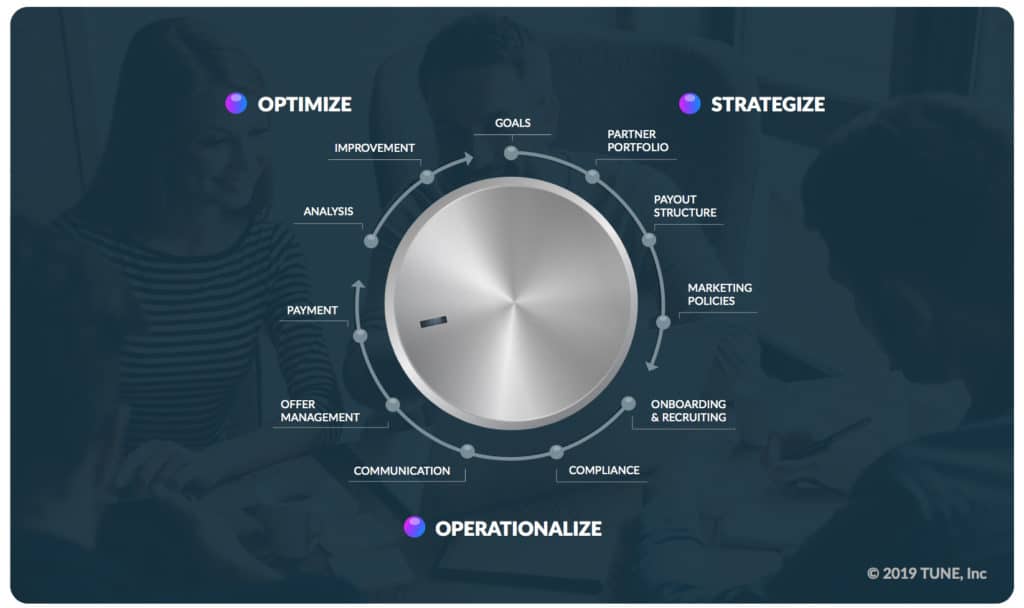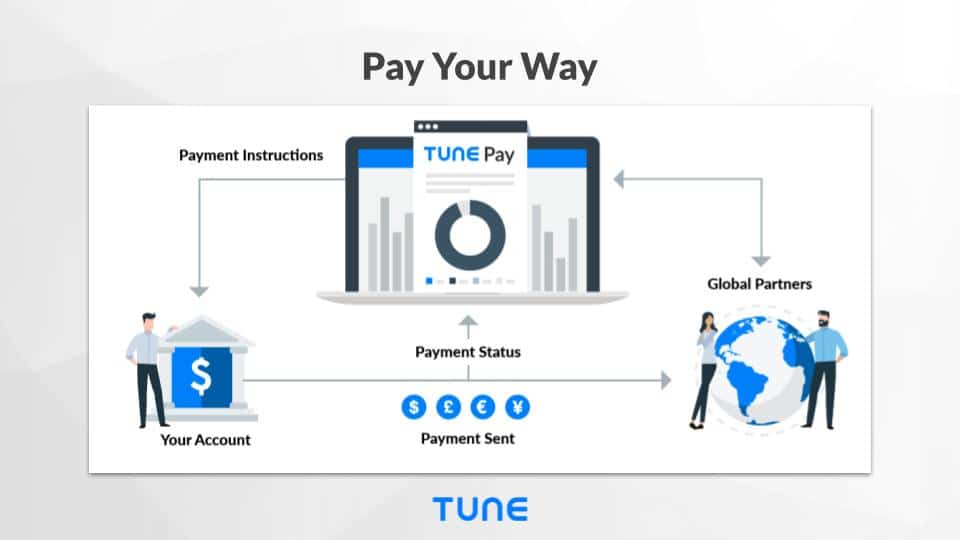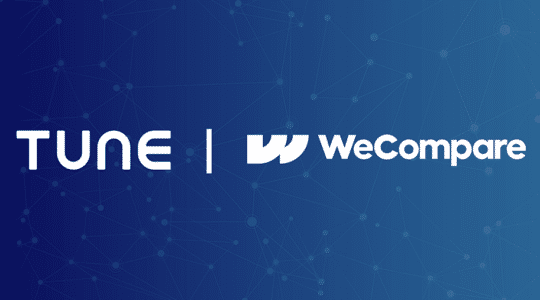Welcome to Part 6 of our seven-part series on partner marketing, in which we explore strategies from The Ultimate Guide to Partner Marketing through examples and brands from the real world. So far, we’ve covered key steps in strategizing and operationalizing a successful partner program. These include planning a partner portfolio, setting marketing policies, recruiting and onboarding affiliates, and managing promotional offers. If you’ve missed the previous posts in this series, head over to Part 1 to start at the beginning.
In today’s post, we’re diving into partner payments. We’ll review how reconciliation and invoicing work across different partner types, present key questions to consider when processing payments, and provide a short guide for assessing partner payment tools to ensure your solution helps to put your program on the path to success.
The TUNE In Framework
Part 6 of our Ultimate Guide to Partner Marketing represents the final step in the Operationalize section of the TUNE In Framework.

It may sound like a mundane topic, but partner payment is one of the most important levers you can pull in your affiliate or partner program. Rewarding an affiliate’s hard work with accurate, on-time payments builds trust and strengthens the relationship between partner and brand. It also tells partners that you recognize and value the effort they are putting in on your behalf — a real competitive advantage, as not all companies value their partners the same.
Paying Partners: Reconciliation, Invoicing, and Payment
Brands with partner programs pay out their partners in a cycle, which is almost always set in stone. A clear, consistent payment cycle allows partners to plan their spending accordingly. In order to produce the cleanest payouts, brands reconcile results to ensure that any last-minute adjustments are accounted for. Once the reconciliation process is complete, the brand processes the partner’s payment.
For the most accurate payment, answer these three questions at the reconciliation stage:
- Does your payout structure require a true-up of commissions based on volume or other factors?
- Does your customer service policy affect payout? (For example, a policy that specifies what commissionable events are outside of a return window.)
- Do your partner’s or program’s results need to be adjusted for fraud?
Alternatively, brands that work with networks and partner marketing platforms to pay their partners. In some cases, the brand is invoiced for the payment. The brand makes one lump payment to the network or platform, which then, in turn, disburses that payment to the brands’ partners. In other cases, brands directly pay partners using payment processing tools.
Your partner marketing platform should be able to collect payment and translate all of your data into a reporting and payment process that is transparent, automatic, and adjustable. The right technology can handle standard domestic payments as well as options for international programs and partners, including foreign exchange rate settings and multiple currencies. It should also be able to handle more complex payment models — dynamic affiliate payouts, for one example.
Once your payout criteria and partner data is loaded and locked in the platform, you can set the payment process in motion.
How to Find the Right Partner Payment Solution
For a payment solution to provide value to a partner marketing platform, it must connect directly to and work seamlessly with the platform’s existing offer and partner management tools. This direct integration enables brands to streamline financial workflows and secure sensitive transactions.

TUNE Pay is our answer to the partner payment, where brands can:
- Manage invoicing, reconciliation, and payments directly in the TUNE Partner Marketing Platform.
- Pay partners flexibly with customizable approvals, payment periods, currencies, and methods.
You can learn more about TUNE Pay here or download the full free version of our Ultimate Guide to Partner Marketing.
The Final Countdown
The next and last post in our Ultimate Guide to Partner series, Part 7 will cover how to optimize a partner program through data analysis and strategy adjustments. Check back here in a couple weeks. In the meantime, you can always head to the TUNE Blog for partner marketing tips, insights on performance marketing, and the latest news from TUNE.
The TUNE Partner Marketing Platform is the industry’s most flexible SaaS platform for managing marketing partnerships across mobile and web. Request a trial or email us your questions and comments at [email protected].

Learn how to plan, build, and grow cross-channel partner programs with our Ultimate Guide to Partner Marketing series. Follow along as we introduce strategies from the Ultimate Guide and bring them to life with real use cases from leading brands and advertisers.
- Part 1 – Planning Your Partner Program Strategy
- Part 2 – Determining Partner Payouts and Marketing Policies
- Part 3 – Recruiting and Onboarding Partners
- Part 4 – Communicating for Partner Compliance
- Part 5 – Managing Partner Offers
- Part 6 – Partner Payments
- Part 7 – Program Analysis and Optimization
Author
Becky is the Senior Content Marketing Manager at TUNE. Before TUNE, she handled content strategy and marketing communications at several tech startups in the Bay Area. Becky received her bachelor's degree in English from Wake Forest University. After a decade in San Francisco and Seattle, she has returned home to Charleston, SC, where you can find her strolling through Hampton Park with her pup and enjoying the simple things in life.





Leave a Reply
You must be logged in to post a comment.